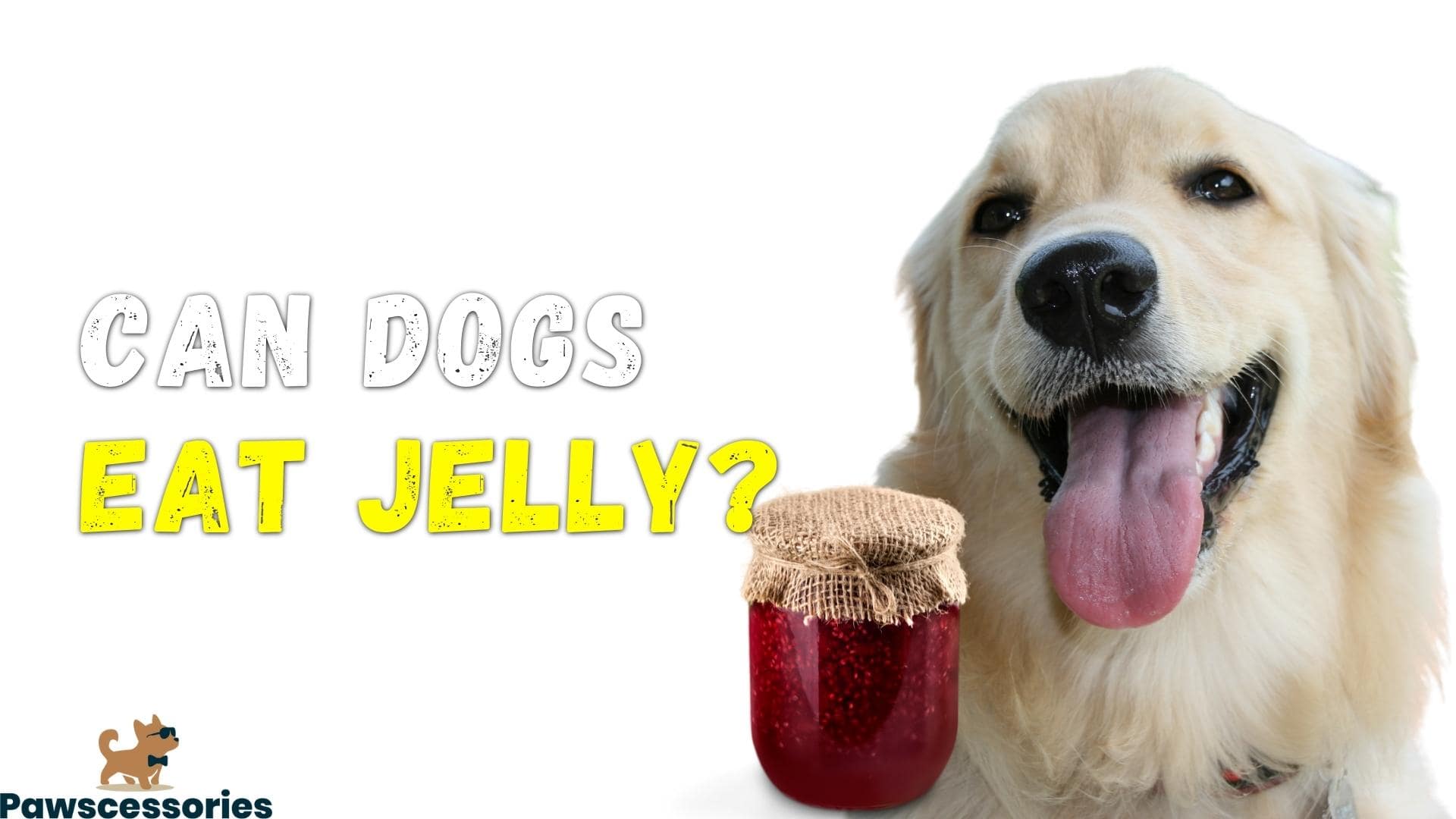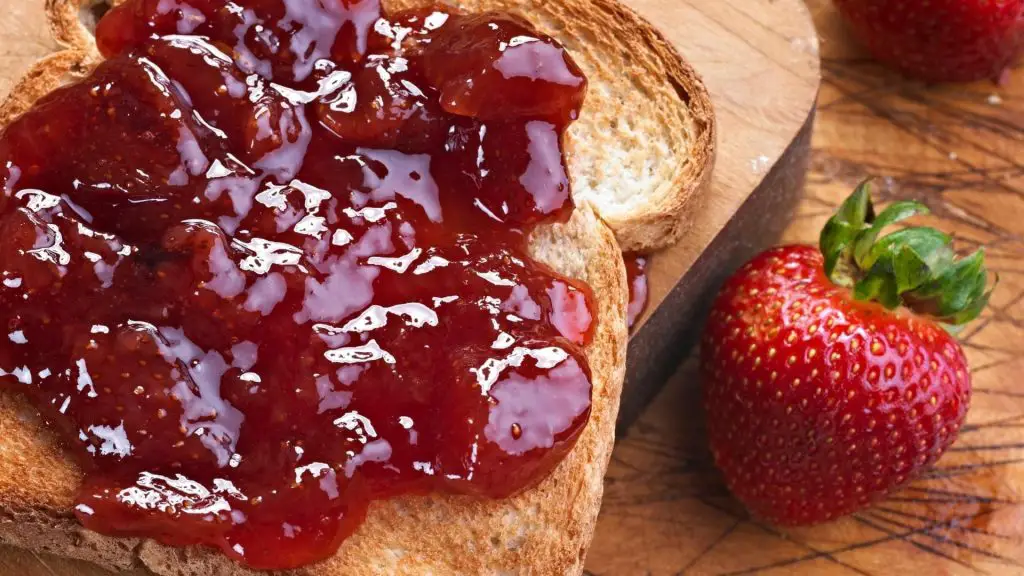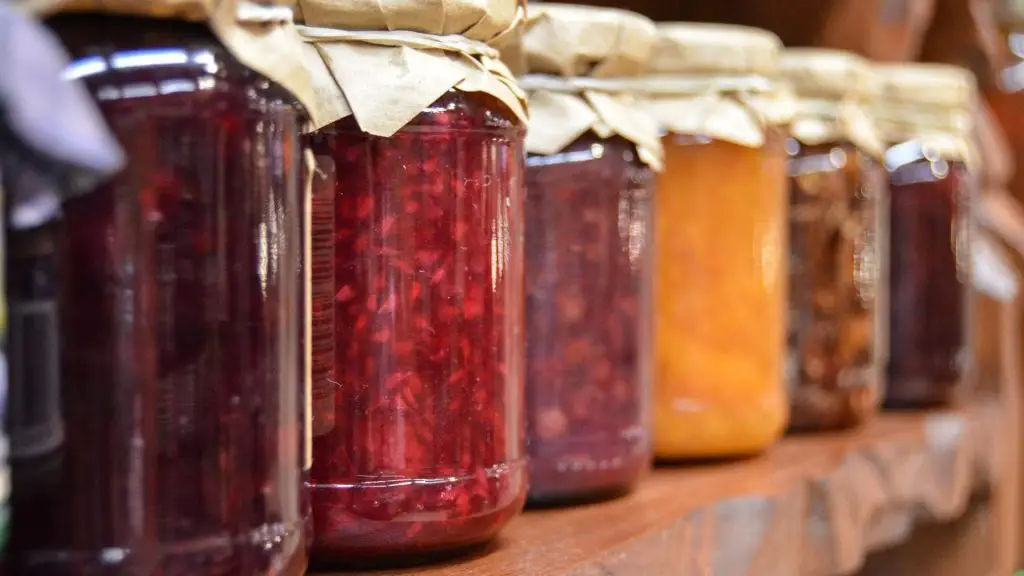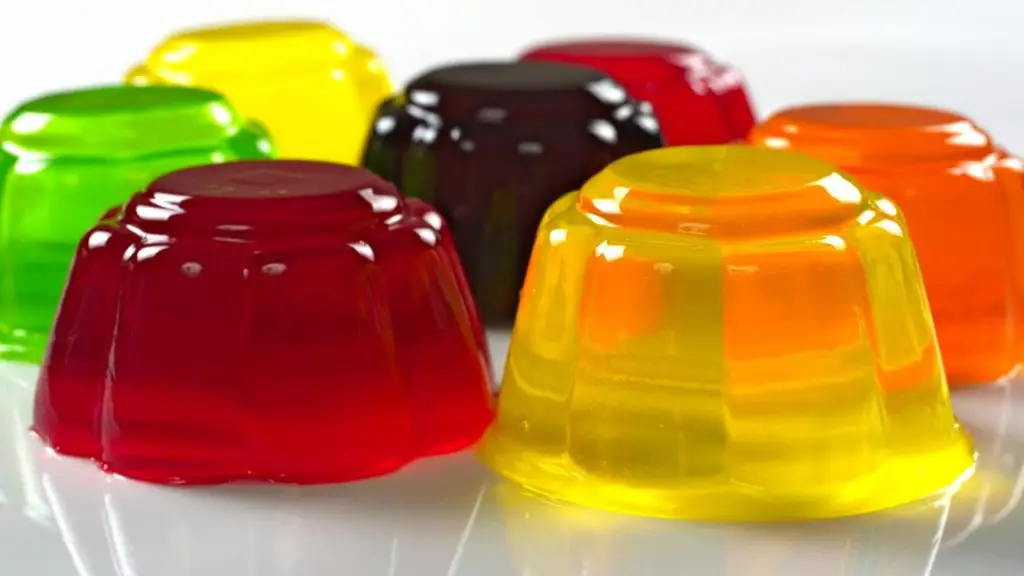Pawscessories is reader-supported. When you buy via links on our site, we may earn an affiliate commission at no cost to you.
Learn more.
There’s nothing quite like a fresh piece of toast slathered with jelly. It’s one of my personal favorite snacks.
I have often found myself eating this but wondered, can dogs eat jelly?
It seems I’m not alone with this question, so I did some digging and asked the experts on pet nutrition.
So can dogs eat jelly?
The answer is no. Jelly is made from cooking fruit juice in sugar and pectin. The sugar and other additives in jelly are harmful to dogs if they eat too much. Some jelly is even made with grapes, which are extremely toxic to dogs. Even sugar-free jelly should be avoided as it can be toxic to dogs.
In this article, you’ll discover:
- Why is jelly bad for dogs
- The dangers associated with dogs eating jelly
- What to do if your dog eats jelly
- If dogs can eat different types of jelly
Let’s dive in.
Table of Contents

Can Dogs Eat Jelly?
Can dogs eat jelly? The answer is easy: No. This goes for jams, and marmalades, which are essentially the same thing.
Jelly is made from cooking fruit juice with sugar and pectin. This high sugar content has no nutritional value for dogs.
Some jellies are made of grapes and Xylitol (a fake sweetener), which are both toxic to dogs.
So, it’s best to steer clear of feeding your dog any type of jelly.
Can Dogs Eat Raspberry Jelly?
There’s no nutritional benefit in raspberry jelly, and it could make your dog sick, so the answer is no.
Raspberry jelly is made by boiling raspberries in water and adding sugar. Dogs are better off eating fresh raspberries as they are high in fiber and vitamin C.
Can Dogs Eat Strawberry Jelly?

No, your dog should not eat strawberry jelly. Many commercially available Strawberry jellies and jam varieties include high levels of sugar and preservatives, which are harmful to dogs.
Dogs can only have a taste or two of your homemade strawberry jam if there are no added preservatives, added sugar, or pectin in it.
Can Dogs Eat Grape Jelly?
Dogs should not be fed grapes or grape-containing products. This includes grape jelly or juice, as well as raisins and even currants which belong to the same family as grapes.
The mechanism of poisoning is currently unknown, but grape poisoning can cause severe kidney failure in some dogs.
Can Dogs Eat Sugar-Free Jelly?
No, dogs cannot eat sugar-free jelly, especially if it has Xylitol in it. Artificial sweeteners are unhealthy for your dog.
Xylitol is particularly toxic for canines. It can cause brain damage and other health issues.
Dangers Of Dogs Eating Jelly

Jelly is not only bad for dogs because of the sugar content.
Many commercially prepared jellies and jams contain harmful chemicals like preservatives, artificial sweeteners, and colorings.
These are added to increase the product’s shelf life but can cause health problems in dogs if consumed in large quantities.
Some of these chemicals include:
BHA and BHT
BHA and BHT are antioxidants, however, although they might be helpful, they have been linked to cancer in dogs.
These are used to prevent rancidity and keep the jelly from changing color.
Xylitol
This is a sugar alcohol used as a sweetener. It can cause insulin release in dogs, leading to liver damage and even death.
Products with Xylitol should be avoided at all costs.
Aspartame
This is another artificial sweetener that is used in sugar-free jellies. Unfortunately, this sugar substitute can cause seizures, brain damage, and even cancer in dogs.
Sulfites
Sulfites are added to fruit jellies to prevent browning. However, they can cause an upset stomach, diarrhea, and vomiting in dogs.
They can also trigger asthma attacks in dogs that are sensitive to them.
These are just a few examples of dangerous compounds lurking in your jelly.
The last danger worth nothing is the sugar contents.
Jams and jellies often contain high sugar levels, which can lead to weight gain and obesity in dogs.
They can also cause digestive problems like diarrhea and vomiting.
Can Jelly Make A Dog Sick?
The answer depends on the jelly, how much your dog ate, and how big your dog is.
Grape jelly contains grape products poisonous to dogs and can make them very sick.
Furthermore, different versions of jelly may have toxic ingredients such as Xylitol, which is also dangerous for dogs to consume.
Even without Xylitol or grape in jelly, it contains large amounts of sugar.
If your dog eats too much sugar, they might have a case of pancreatitis.
Pancreatitis is a severe condition that can be life-threatening.
Symptoms of pancreatitis in dogs include:
- Lethargy
- Vomiting
- Diarrhea
- Loss of appetite
- Abdominal pain
- Dehydration
- Fever
- Increased heart rate
- Difficulty breathing
In severe cases, pancreatitis can lead to organ failure and death. If you think your dog may have pancreatitis, it’s important to take them to the vet immediately.
Treatment for pancreatitis usually includes antibiotics, IV fluids, and rest. In severe cases, your dog may need to be hospitalized.
What To Do If Your Dog Eats Jelly?

If your dog eats a small amount of jelly, they are unlikely to experience any issues. However, if they eat a large amount of jelly or if you are worried about any of the ingredients, it’s best to call your veterinarian.
The biggest concern is the sugar content in jelly, as it can lead to pancreatitis in small dogs. If your dog shows signs of pancreatitis, it’s important to take them to the vet immediately as it can be life-threatening.
Typical questions a vet will ask when dogs overeat are:
How much did they eat?
How much does your dog weigh?
What kind of jelly was it?
Are they showing any signs of illness?
They ask these questions to determine if the ingredients, the amount eaten, or the size of your dog is likely to cause any issues. For example, small dogs are at the greatest risk when overeating sugary foods. On the flip side, a large 100-pound dog is unlikely to be phased by eating jelly.
If your dog has eaten a large amount of jelly or you are unsure of the ingredients, the best course of action is to speak with an expert.
Other Frequently Asked Questions
Can Dogs Eat Jelly Beans?
No, dogs should not eat jelly beans. They contain Xylitol which is poisonous to dogs.
What about sugar-free jelly beans?
Can Dogs Eat Peanut Butter and Jelly?
Dogs should not eat peanut butter and jelly. While peanut butter can be a great treat for dogs in moderation, jelly contains large amounts of sugar and preservatives, which can be harmful to dogs.
Further Reading: Can Dogs Eat PB and J? What You Need To Know
Can Dogs Eat Jello?

Yes, dogs can eat gelatin, but jello-flavored brands that come in boxes are not good for them because they contain sugar and other flavorings that can be harmful to dogs.
Often times the jello brands will include Xylitol or other artificial sweeteners that are not good for dogs.
Homemade gelatin is fine for dogs as long as it contains no sugar or sweeteners.
Can Dogs Eat Jam?
Yes, in moderation, dogs can have jam. However, just like jelly, store-bought brands often contain too much sugar and other additives that can be harmful to dogs.
It’s best to make your own dog-safe jam at home or purchase a brand specifically for dogs.
Final Thoughts
As you can see, there are many things to consider before feeding your dog jelly.
Jelly brands contain sugar or artificial sweeteners like Xylitol that can be dangerous for dogs to eat.
While one little taste here or there would likely cause no harm, it is better to play it safe.
Homemade jelly can be okay for dogs, but always avoid feeding them store-bought brands.
If you’re ever unsure about what to feed your dog, the best thing to do is consult with your vet. They can give you tailored advice for your dog’s specific needs.
Other posts you might find interesting:
Can Dogs Eat Strawberry Yogurt? (We Asked Vets For Advice)
Can Dogs Eat Sugar Cookies? (We Spoke With A Vet)
Can Dogs Eat Sour Candy? Dangers + Tips If They Eat Some
